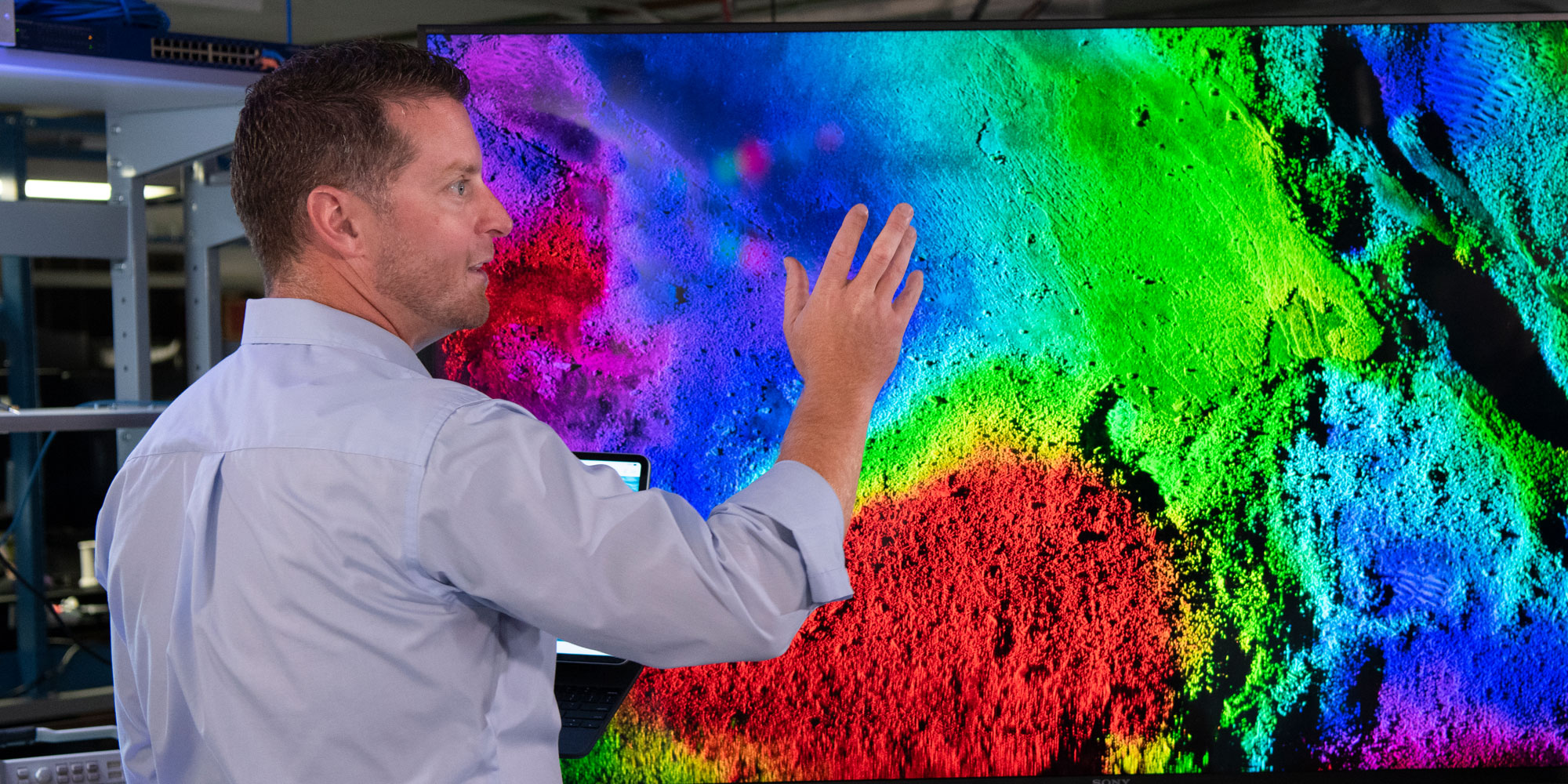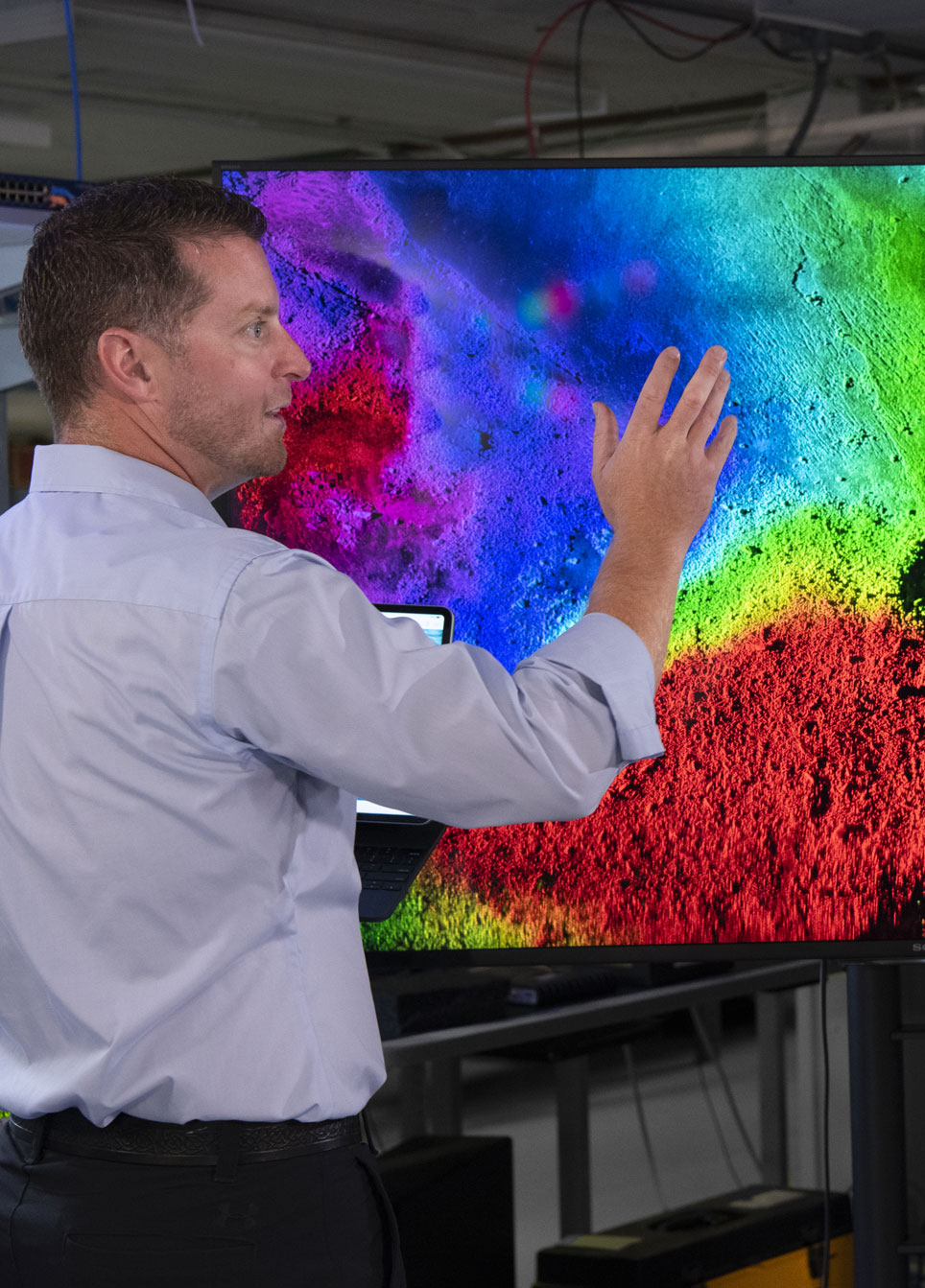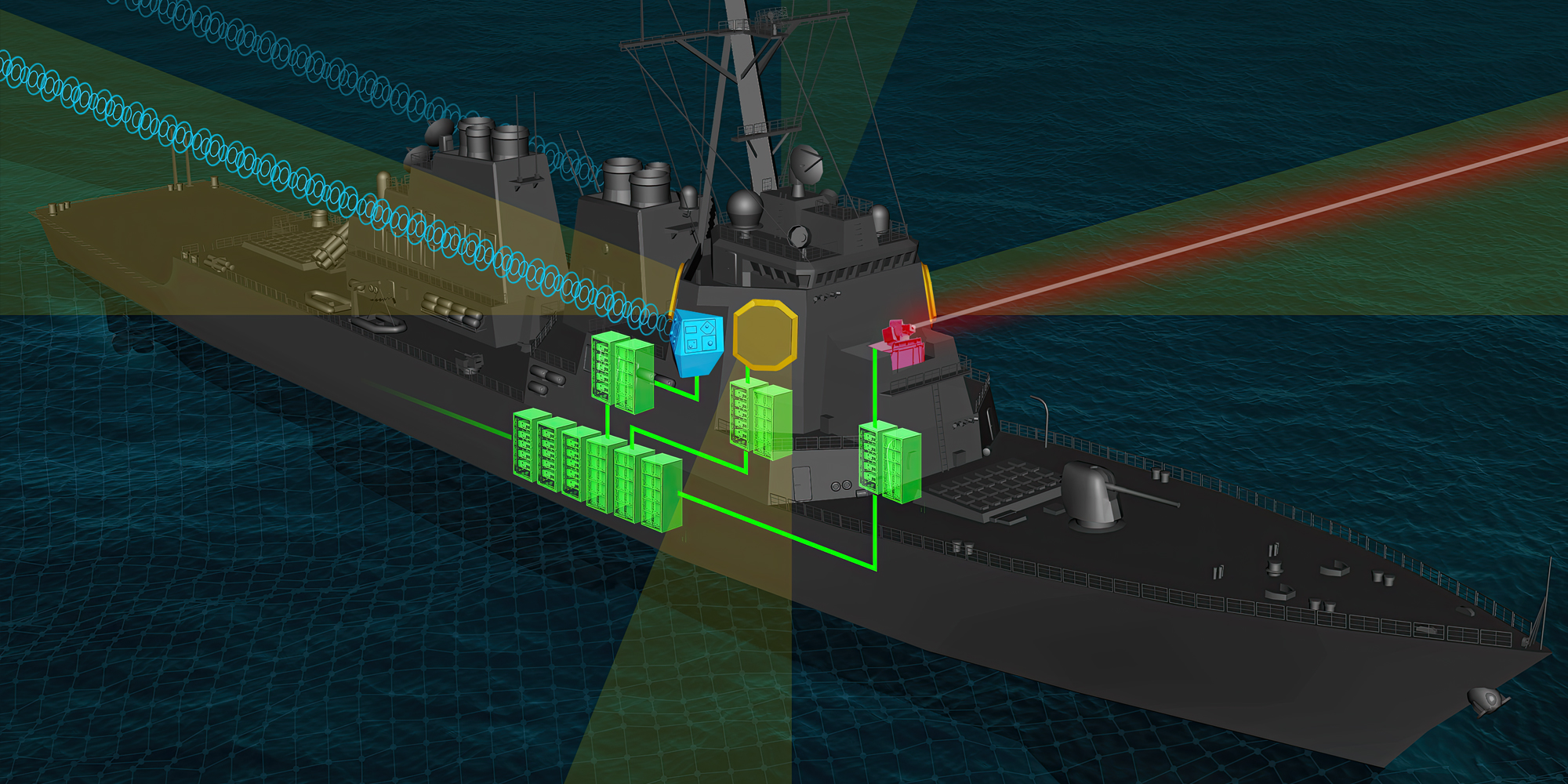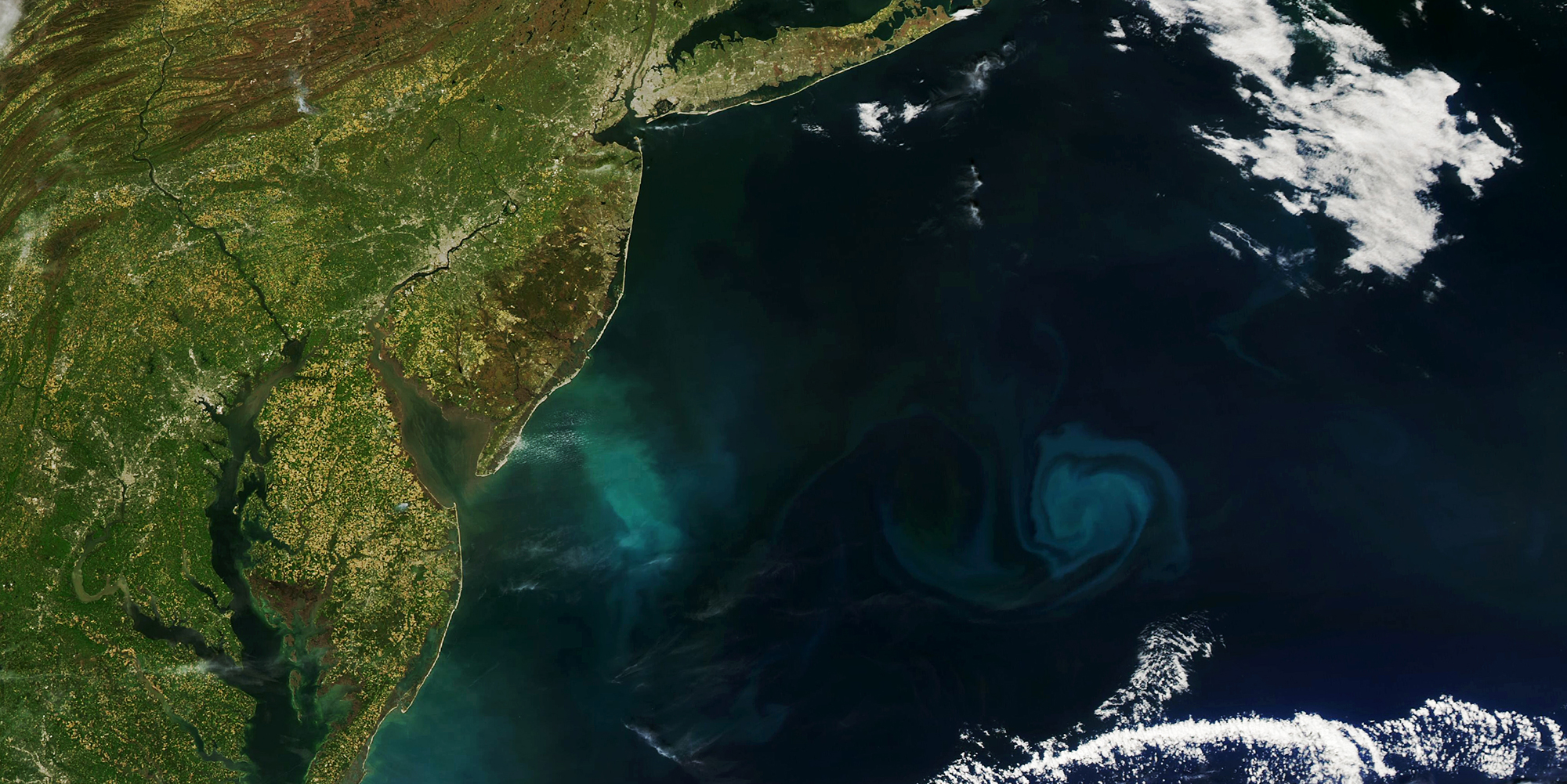A “eureka!” moment can strike any time — on a yoga mat, in the garage, or in the shower — proving that some of the best ideas happen when least expected.
A Window Under the Sea
Virtually Exploring the Ocean Floor

By Fernando Catta-Preta
In Jules Verne’s “Twenty Thousand Leagues Under the Sea,” Captain Nemo shows guests the wonders of the ocean floor through a large, round window on his submarine. It’s a fantastic image and a classic icon from the sci-fi genre, but could a window on a deep-sea vehicle work in real life?
Typically, the answer to that question would be “no” — the water pressure against the external hull of any vessel at extreme depths is too strong for a large window, and special, thick, cone-shaped glass would be needed to prevent a window from being pushed through the steel hull of the submarine. Due to how dark it is in the depths of the ocean, very strong lights and a practical way to clear the area of floating particulate matter would also be necessary. A large circular window with a clear, vivid view of the undersea realm would be nearly impossible to accomplish anywhere outside the confines of Nemo’s fictitious submarine.
But, if you’re an engineer at Northrop Grumman, the answer to that question is “yes.” The team at Dolphin Works — our Annapolis, Maryland, lab — found a way to make it work.

Boatloads of Data
Lauren Lagua, senior principal systems engineer at Dolphin Works, wears many hats: she is a systems engineer, a transducer designer and an acoustic engineer. Lauren is part of the Northrop Grumman team that developed the µSAS (pronounced “microSAS”) sensor, which allows uncrewed undersea vehicles to capture sharp images of the ocean floor.
This technology has been used in mine-hunting and target recognition as well as for non-defense applications, such as exploring shipwrecks, looking for black boxes at the sites of plane crashes or monitoring oyster growth on reefs.
“When coupled with other technologies, like advanced data visualization, artificial intelligence (AI) and machine learning processing, it becomes a tool that sailors and analysts can use to investigate, navigate and work in hi-res at the depths of the ocean,” said Lauren. “It opens the door to unparalleled insights.”
The enormous amount of data from µSAS needs an app to efficiently process it all and allow for even sharper images to take form. Our powerful, open-ended data processing application GATR, or Generalized Automatic Target Recognition, is used to parse the large amounts of data from the sensor into organized layers, allowing µSAS to function at the top of its game and provide more detailed, vivid images of what it’s looking at in the ocean.

Connecting the Blocks
These layers of data still have no practical way of being displayed. Enter SLICE.
Randy Hess, a senior staff engineer at Northrop Grumman created the Scene Layering and Indexing Capability Environment, or SLICE, for the radar community. Partnering with Dolphin Works’ Lead Engineer Shane Healey, they found a way to tweak the application for use with the µSAS sensor. The result was an immersive platform in which in a virtual reality (VR) environment is populated with detailed 3-D objects, generated from scans of their doppelgangers on the ocean floor.
“SLICE allows the user to wander and explore this world intuitively,” said Bjorn Moreau, senior staff engineer, Embedded Software, and GATR team lead. "Images can be rotated and zoomed in, making even the smallest objects clear enough to analyze.”
Draining the Ocean
This tech will provide warfighters with a clearer view of the undersea environment around them and support challenging operations where vehicles must navigate within tight tolerances. AI functions, such as automated target recognition, navigation and next generation data processing, will give sailors an incredibly enhanced display of the undersea environment. Using this VR technology to execute missions gives sailors an immediate leg up on adversaries, analyzing potentially dangerous scenarios from a safe distance. Whether looking for dangerous sea mines or searching for new subaquatic species, this system will significantly impact how we explore the ocean floor.
“This is much more than an underwater window,” said Lauren. “It’s like the opportunity to temporarily drain the ocean to explore a shipwreck.”
Learn more about how we’re defining possible at sea, or explore what it’s like to work at Northrop Grumman.
More Innovation Stories
Read all stories about advanced technology and innovation



